Here's an all-too familiar winter driving scene: the roads are dusted with slippery, powdery snow and the all-season tires that came with your car seem to be getting the job done. Until your back wheels start to fishtail. Or you brake for a traffic light -- and your car keeps rolling (skating?) toward that icy intersection for several more seconds.
Opt out of those nerve-wracking moments this winter. Get snow tires. Get your brakes, your traction (and your confidence) back.
Snow tires (also called winter tires) provide better traction and braking on winter roads compared to all-season tires, summer tires, or performance tires. The main advantages of snow tires come from cold-friendly rubber composition and precipitation-friendly tread design:
Deeper Tread Depth: Snow tire treads can grip though surface snow and slush.
Groovy Tread Patterns: Snow tire tread patterns have more grooves, to increase the surface area for traction.
Wider Siping: Snow tire edges often feature more open channels called siping to evacuate water.
Softer Rubber: Snow tire rubber is formulated to stay flexible in temperatures below 45 °F / 7 °C (where other tires may develop cracks and premature wear).
Winter tires come in studded and studless types. (Technically, studdable tires are also on the market -- with holes in the tread to install your own studs.) Studded tires offer extreme traction, but give you a bumpy ride the rest of the time. Plus, studded tires damage roads. They’re only legal during winter in most of Canada and the U.S. -- and banned outright in some states. Studded snow tires were once the state of the art in snow tire design and many of us grew up with them. Studless snow tires are the standard winter tire choice today, thanks to decades of advances in tread design and rubber formulation.
All-season tires are not a substitute for snow tires.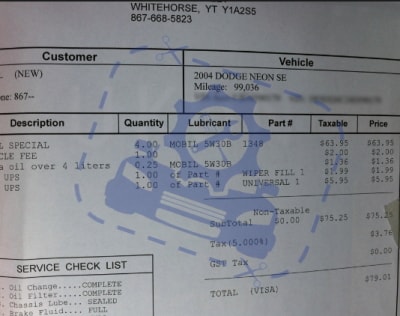 They’re designed to be a compromise between winter traction and warm-weather performance, comfort, and fuel efficiency. Both summer tires and winter tires outperform all-season tires in their areas of strength. And depending on where you drive, snow tires may be a requirement:
They’re designed to be a compromise between winter traction and warm-weather performance, comfort, and fuel efficiency. Both summer tires and winter tires outperform all-season tires in their areas of strength. And depending on where you drive, snow tires may be a requirement:
Vehicles registered in the province of Quebec must have four snow tires from December 1 to March 15 -- and they must be either studded or marked with the three-peak mountain snowflake (3PMSF) symbol. (Learn about 3PMSF tires.)
In several U.S. states, local officials have the power to mandate snow tires (or chains) during harsh weather or on snowy roads. New to an area with serious winters? Check with your state transportation department -- or your local Midas tire expert -- for current tire laws.
More and more off-road and all-terrain tires bear the 3PMSF “mountain snowflake” symbol indicating that they are snow-rated, but these tires aren’t a substitute for snow tires. They’re designed to include snow in the types of terrain they can handle, but most aren’t made of cold-tolerant rubber and they aren’t optimized for the full range of winter challenges -- such as icy streets when you aren’t driving off-road.
They’re designed to include snow in the types of terrain they can handle, but most aren’t made of cold-tolerant rubber and they aren’t optimized for the full range of winter challenges -- such as icy streets when you aren’t driving off-road.
Off-road driving can complicate your snow tire options. Trust Midas to help you find your perfect winter tires.
Related:
Learn more about all-terrain tires.
If winter temperatures in your area regularly drop below 45 °F / 7 °C, snow tires are well worth the extra expense - no matter how much (or how little) snow falls.
1. Snow tires offer better cold-weather traction whether it’s snowing or not, because they’re made of more cold-tolerant rubber than other tires. So “snow” tires offer peace of mind all winter -- even when there’s not a cloud in the sky.
2. Snow tire treads really do outperform all-season tires on snow and ice. In a test of multiple tire brands, Consumer Reports found that winter tires reduced braking distance on ice by an average of six feet, and improved snow traction by an average of 34%
1.
Here’s another reason snow tires are worth the money: Keeping your regular tires off the road and safely stored during the winter months will extend their life for another two or three years.
Four matching snow tires are recommended for all passenger vehicle types. Your vehicle’s brakes and traction control are designed for all its tires to have the same traction capability. If you only change your front tires to winter tires, the back of your vehicle may spin out as the back tires grip the road loosely compared to the front. If you only install winter tires on the back of your car, you may find it difficult to turn your vehicle as the front tires encounter resistance from the back tires.
Winter tires excel in temperatures below 45 °F / 7 °C, and summer tires rule the road in warmer weather. It’s not just about snow -- it’s the rubber, too. Summer tires can grow brittle in cold weather, risking premature cracks and wear. Winter tires can become too soft in warm weather, increasing rolling resistance, compromising fuel efficiency, and wearing down your tire edges prematurely.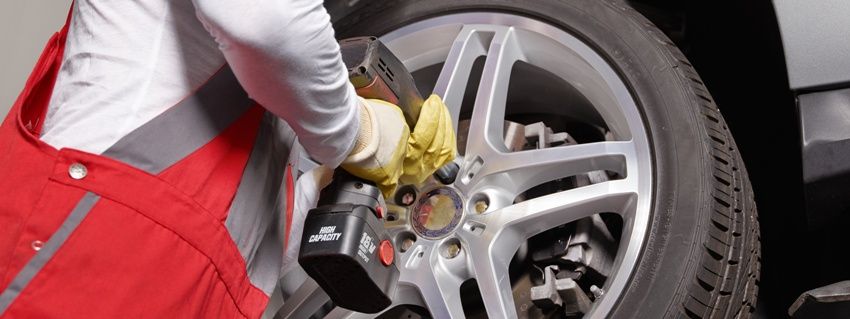
Snow tires should not be used when the temperature regularly exceeds 45 °F / 7 °C. Snow tires are made of softer rubber than other tires to counteract the brittleness that rubber takes on when cold. A winter tire used in warm weather becomes too soft, causing uneven tread wear and risking premature breakdown. The tread wear pattern on a snow tire used out of season looks much like the wear pattern on an under-inflated tire.
A set of snow tires that is properly used, maintained, and stored will provide most drivers with three to four seasons of superior winter traction. After that, the tires may be usable for several more winters, but without the full benefits of winter tires. Your tire manufacturer may offer guidelines, and the actual life of your snow tires will depend on your mileage, your driving conditions, and how you care for your tires. You can extend their life by using your winter tires in only cold weather, storing them properly in warm weather, maintaining proper tire pressure, and following a regular schedule of wheel alignment, tire rotation, and tire balancing.
Replace your snow tires if they sustain sidewall damage, or when they’ve worn down below acceptable tread depth. In the U.S., 2/32” is the legal minimum tire tread depth, and some manufacturers encourage drivers to keep their tires until that point. (Tip: When your tire wear bars show visible wear, you’re there. Replace those tires as soon as possible.) But 4/32” to 6/32” may be a better tread depth for snow tires. In a test of multiple winter tire brands at 5/32”-6/32” tread depth, Consumer Reports saw a 14.5% decline in snow traction during acceleration, and a 7% increase in wet stopping distance2.
Related:
How to measure tire tread depth with a U.S. or Canadian coin.
Your local Midas technician can inspect your snow tires during the season switch, or whenever you have your tires serviced. You’ll get objective advice on when it’s time for replacement tires.
In warmer weather (temperatures regularly above 45 °F / 7 °C) store snow tires away from heat, light, air, and moisture to protect them from rubber breakdown and dry rot.
Updated:
Photo: iStockWhether your region requires you to install snow-rated tires during the cold months or you simply want to sport them for added safety, you should know how much a winter tire costs.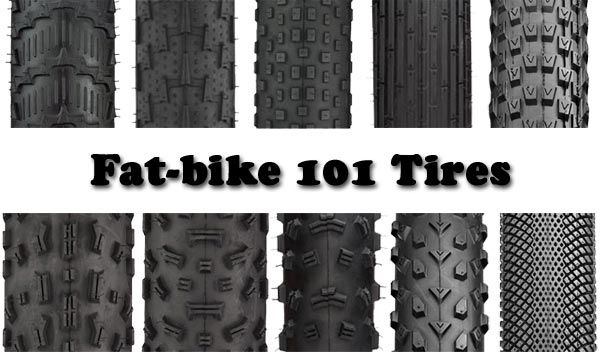 Many car owners just don’t install winter tires because they believe they’re unaffordable.
Many car owners just don’t install winter tires because they believe they’re unaffordable.
While winter tires are typically known to be more expensive, affordable options from growing tire brands like Sailun Tire don’t compromise on the quality and performance drivers expect on the icy roads.
But even the pricer ones are more affordable than your rising insurance premium, likely medical bills, and automotive repairs (not covered in the insurance policy) that you must endure due to an accident in harsh winter conditions.
Here, we will explain the cost of different winter tires and the additional expenses associated with them. If you’re in the market for new winter tires — from value-based to premium — check out our full buying guide here.
Many factors affect the price of winter tires, including brand, type, quality, and size. Since every brand has its own criteria to evaluate the price for its rubber, we would avoid commenting on it.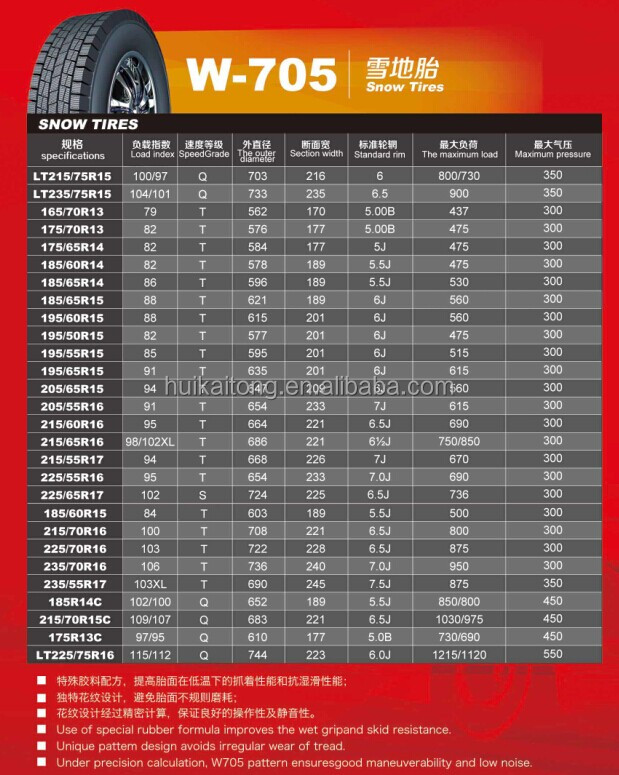 However, we will specifically discuss type, quality and size to give you a fair idea of winter or snow tires.
However, we will specifically discuss type, quality and size to give you a fair idea of winter or snow tires.
For a compact car with a famous 205/55R16 size, below are approximate prices.
The three main types of winters you find in the market include studless, studded, and winter performance.
Studdless Tires
For most people, studdless winter tires are a perfect companion in cold conditions. These incorporate biting edges and soft rubber compounds, making them flexible for winter. A standard studdless tire will cost you anywhere between $60 and $550, each.
On average, for a typical compact car, expect to pay around $100-$150 per tire or $400-$600 for all four. For an SUV or light-duty pickup, the price goes up to $200-$400 each or $800-$1,200 for a set of four.
Studded Tires
For extreme weather conditions like freezing rain, sleet and wet ice, studded tires are ideal for a safe driving experience.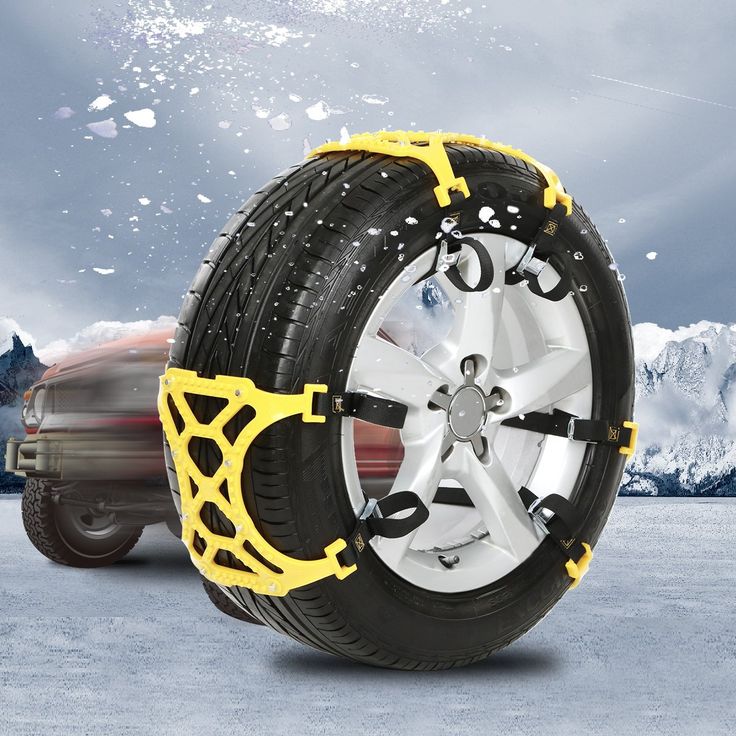 The metal studs fixed on these tires bite into ice, giving you improved grip and handling. A studded rubber would cost you around $75-$550 or more per tire. For two pairs, you can expect to pay between $300 and $2,200.
The metal studs fixed on these tires bite into ice, giving you improved grip and handling. A studded rubber would cost you around $75-$550 or more per tire. For two pairs, you can expect to pay between $300 and $2,200.
There are also studdable options, like the Sailun Iceblazer WST1 studdable performance winter tire trusted by over 1-million drivers in Canada alone, which won’t break the bank yet designed for drivers that demand maximum traction in severe weather conditions.
Sailun IceBlazer WST1 studdable winter tireSailun IceBlazer WST1 studdable winter tireWinter Performance Tires
For guys who do not want to leave their sports cars or performance sedans in their garage in winters, they should put on winter performance tires. They are designed to offer excellent traction at high speeds on wet and dry roads. However, they are not your perfect companion for ice or snow-packed roads. A regular high performer is available at around $100-$500 each or $400-$2,000 for all four.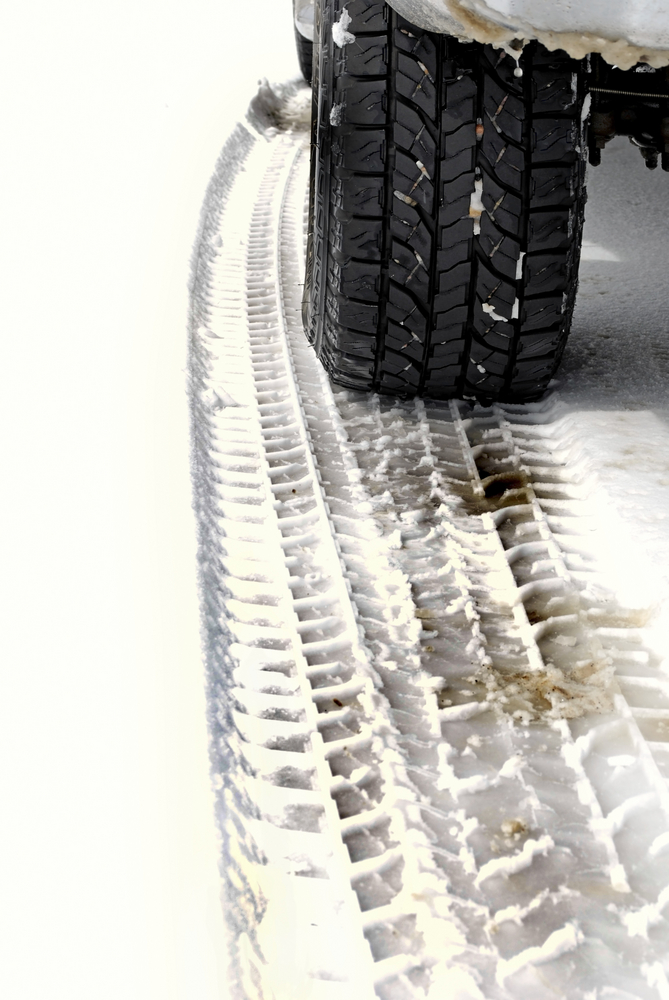
For all the prices we mentioned above, the smaller the size, the lower the cost. However, the price variation also depends on the tire brand, with American tires selling higher than Chinese-made tires.
The prices we shared above are purely for snow tires; they do not include installation charges. For installation, you have two choices. You can either mount the winter rubber on the existing wheels or buy a new set of wheels for all tires.
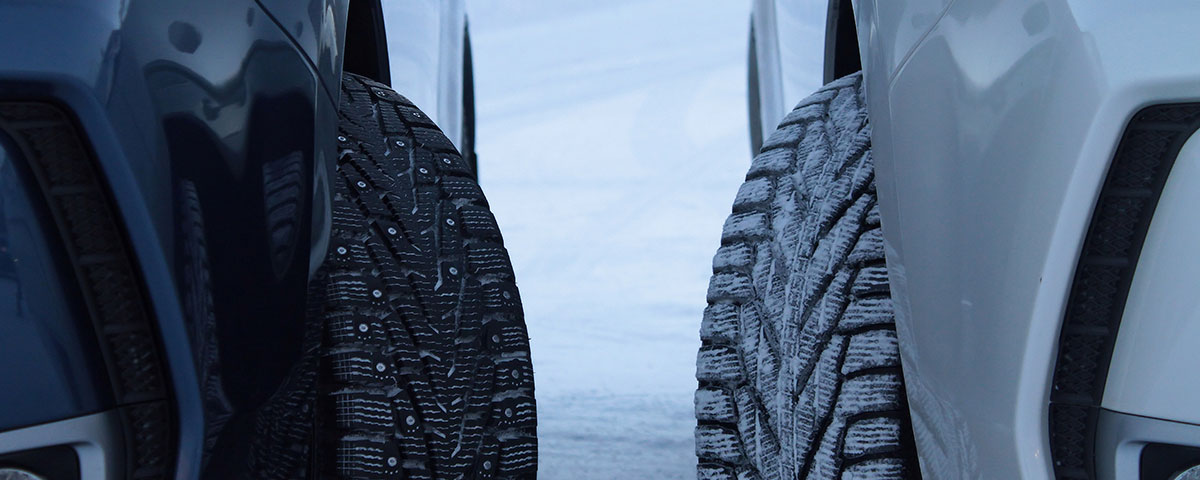
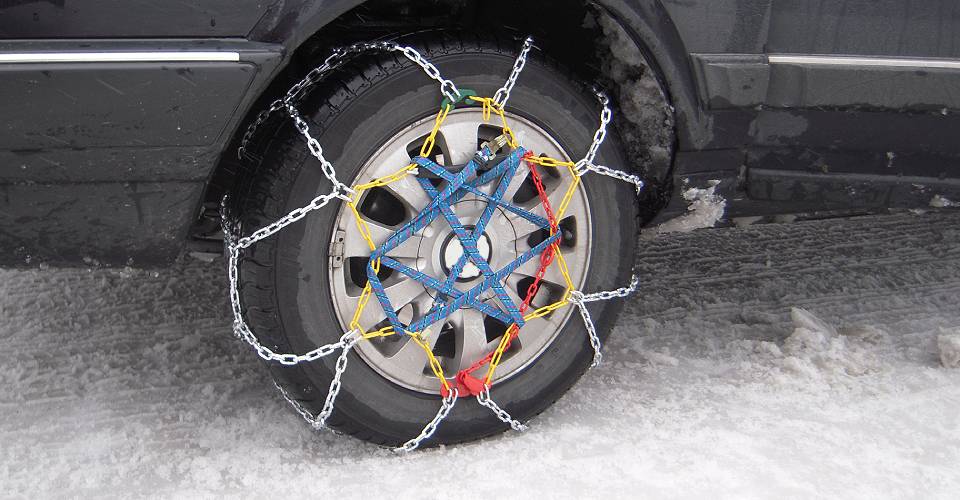 The latter comprises everything from the valve stem, tire installation, and wheel balancing. However, some workshops ask for an extra $2-$25 per tire for these services.
The latter comprises everything from the valve stem, tire installation, and wheel balancing. However, some workshops ask for an extra $2-$25 per tire for these services.  For a two-wheel-drive car, if you think two new tires would be enough, you can’t be more wrong. With only two wheels gripping properly, the vehicle can simply pinwheel out of control.
For a two-wheel-drive car, if you think two new tires would be enough, you can’t be more wrong. With only two wheels gripping properly, the vehicle can simply pinwheel out of control.Consumer Reports says that winters tires increase the snow traction by 34%, thus making it easy for you to stop and maneuver the vehicle. These tires actually cut the braking distance by around six feet. That six feet distance is often the gap between you rear-ending a car or drifting into a crossing against carefully coming to a halt without causing a mishap.
Buying the snow tires also enables you to enjoy insurance savings as well as better fuel mileage (if you maintain them well).
Of note, 76% of all Canadians change their all-season tires with snow tires to enjoy better traction and control. Most car owners say that these tires have saved them a possibly dangerous condition.
Forecasters advised residents of the capital not to delay and "change shoes" their car for the winter. According to their forecasts, a cold snap is expected in the city by the end of the week. At the same time, summer tires change their properties at low temperatures. We figure out which tires are better to choose for the city, as well as when they should be changed.
Photo: portal of the mayor and government of Moscow
It is necessary to switch from summer to winter tires when the average daily temperature drops to five degrees Celsius. Automotive expert Yegor Vasiliev told Moscow 24 about this.
The composition of summer and winter tires is different, which affects the characteristics of the tires, for example, the hardness of the top layer of the tread.
With summer tires, as the temperature drops, the compound begins to work poorly on traditional surfaces such as asphalt.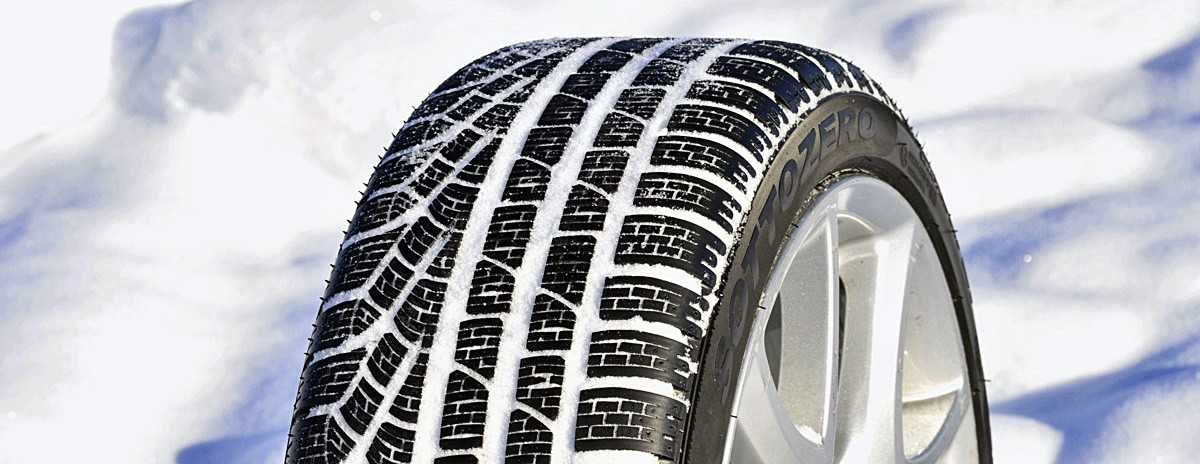 They become oak and interact worse with the surface in their contact patch. Due to the fact that, on average, the stiffness of the tire increases, it begins to turn into slip earlier. That is, the car becomes to some extent less manageable.
They become oak and interact worse with the surface in their contact patch. Due to the fact that, on average, the stiffness of the tire increases, it begins to turn into slip earlier. That is, the car becomes to some extent less manageable.
Yegor Vasiliev
car expert
"A person from scratch can face a problem when, moving on cold asphalt on summer tires, he suddenly feels that there is ice under the wheels," Vasiliev specified.
According to the expert, in no case should you wait for the snow to fall. It is better to change summer tires to winter tires in advance. The situation when snow suddenly falls, and most motorists have not yet "changed their shoes", is always fraught with increased accidents on the roads, Vasiliev emphasized.
Switching to winter tires must be accompanied by a change in driving style. "Don't think that after changing tires to winter tires, you can immediately drive fast and actively. You need to interact with the car smoothly and accurately.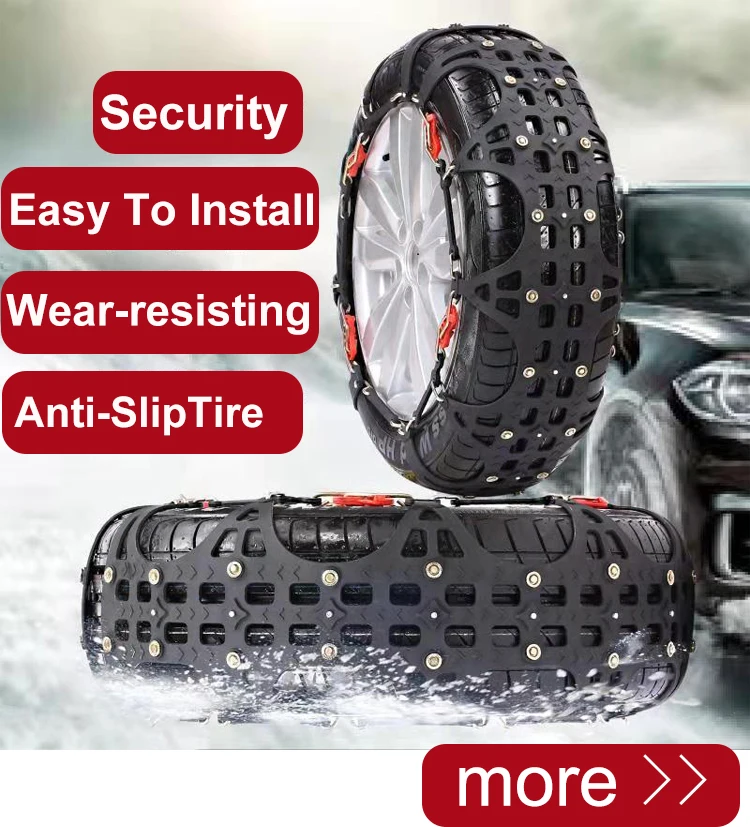 This applies to both the steering wheel and the gas pedal. Do not try to surprise with speed and sharp maneuvers. Winter tires do not like sudden actions when turning the steering wheel," the expert concluded.
This applies to both the steering wheel and the gas pedal. Do not try to surprise with speed and sharp maneuvers. Winter tires do not like sudden actions when turning the steering wheel," the expert concluded.
Photo: Moskva 24/Anton Velikzhanin
Modern winter non-studded tires, the so-called Velcro, in urban conditions provide traction no worse than their alternative. Autoexpert Igor Morzharetto told Moscow 24 about this.
"In a metropolitan area, Velcro should be preferred. Studded tires are noisier and also spoil the asphalt. For this reason, in European countries, with the exception of the Scandinavian countries, it is forbidden to use studded tires," the specialist emphasized.
Studded tires are good for driving on ice or hard snow. For city streets, it is better to use non-studded winter tires; on snow, they behave quite adequately and provide good grip.
Igor Morzharetto
car expert
The expert added that the class of the car, be it a crossover or a passenger car, does not affect the choice of winter tires. Buy Velcro or studded tires in the first place, depending on the route of the driver.
Buy Velcro or studded tires in the first place, depending on the route of the driver.
"Suppose a person lives in a remote area of the Moscow region, where roads are not always promptly cleaned and ice is regularly iced over. At the same time, he mainly drives around his area. Even in a passenger car, he should give preference to studs," the expert believes.
Photo: Moskva Agency/Kirill Zykov
Sergei Kanaev, Chairman of the Coordinating Council of the Federation of Russian Car Owners (FAR), told Moscow on 24 that tires should be bought out of season. Otherwise, you can stay without discounts.
When buying winter tires now, it will not be particularly possible to save money, because soon people will go en masse to tire shops to change summer tires. Therefore, there are no prerequisites for reducing prices for winter tires in the near future. On the other hand, sellers are already giving good discounts for summer tires.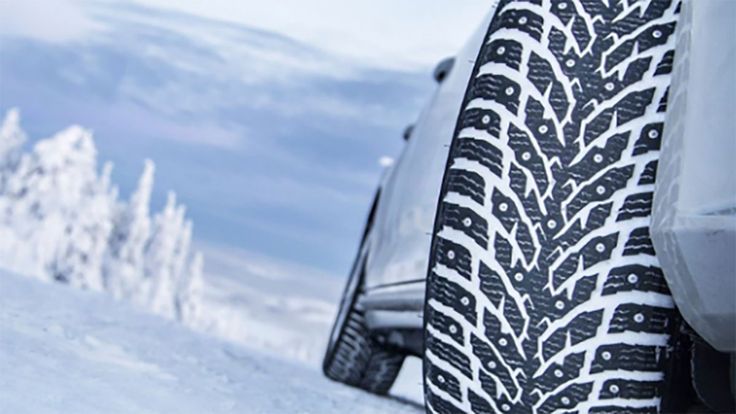 Therefore, if you have free money, it makes sense to buy summer tires for next year in order to save money.
Therefore, if you have free money, it makes sense to buy summer tires for next year in order to save money.
Sergey Kanaev
Chairman of the FAR Coordinating Council
In addition, you can save on buying winter tires if you buy used rubber. However, in this case, it is worth paying close attention to the brand and focusing on trusted manufacturers, the expert believes.
You can also save on winter tires by extending their life through proper maintenance. "There is a so-called tire speed index, the maximum speed approved by the manufacturer for a given type of tire. No winter tires like speed, so they have an index lower than summer tires. For many winter tires, 110 kilometers per hour is common. If this speed is exceeded tires start to wear out very quickly," the auto expert warned.
Another way to extend the life of tires for a short time is to swap a worn tire with a better one. The fact is that intensive wear of winter tires occurs on the drive wheels, explains Kanaev.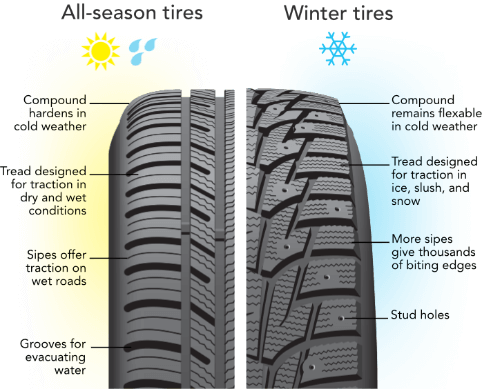 The expert recommended changing it to a new one when the tread height remains 5 millimeters.
The expert recommended changing it to a new one when the tread height remains 5 millimeters.
Nosatov Ivan
transport auto
Change of seasons, cooling or warming are associated with the replacement of car tires. Car owners are faced with the choice of tire type, wondering at what temperature Velcro can be driven and how to provide optimal conditions for accident-free driving.
Summer tires are designed for positive temperatures. Winter tires are used at 7°C and below. The main differences are in the quality of the rubber, as well as in the tread pattern.
"Winter" rubber compound provides a short braking distance, good grip on snow and ice surfaces. The tread is characterized by a high density of sipes, a directional pattern, and expanded grooves. When choosing, you should consider the difference between traditional studded models and Velcro.
The tread is characterized by a high density of sipes, a directional pattern, and expanded grooves. When choosing, you should consider the difference between traditional studded models and Velcro.
Non-studded "sticky" wheels are made of soft rubber, have an extensive network of grooves on the tread. Water from the road surface is distributed over the lamellas and "absorbed". The friction between the wheel and the surface increases, the car "sticks" to the road.
According to the results of testing both options, which was carried out in difficult conditions, the average stopping distance of a car with Velcro is 15-17% less than studded cars.
The braking distance depends on temperature, road conditions, ice conditions. The car travels the same distance from pressing the brake pedal to a complete stop on the spikes or Velcro at -15°C. When the temperature drops, it is advisable to wear “soft” tires, and when the temperature rises, studded tires.
Velcro is suitable for rough ice, because the lamellas cling to uneven surfaces. On a smooth ice field, a car with spikes will be more stable. If the sun has melted the surface, studded tires will also be more effective.
When the temperature drops to -20°C, the braking distance of the machine on spikes is 20% longer than Velcro. Therefore, during severe cold weather, it is better to use “soft” rubber.
In the range from -5°C to 0°C, the braking distance of the car on the spikes will be shorter. Melt water causes Velcro to slip. The more water, the worse the grip of the wheels. In puddles, the effectiveness of any rubber is reduced. But studded tires are better for slippery surfaces.
When choosing tires, first of all, you should take into account the climatic zone of the region where you live. On frozen roads, during harsh winters, it is better to use Velcro. Spikes are more suitable for mild climates, thaws and ice.
The standard condition for changing tires is a decrease in the average daily temperature below 3°C.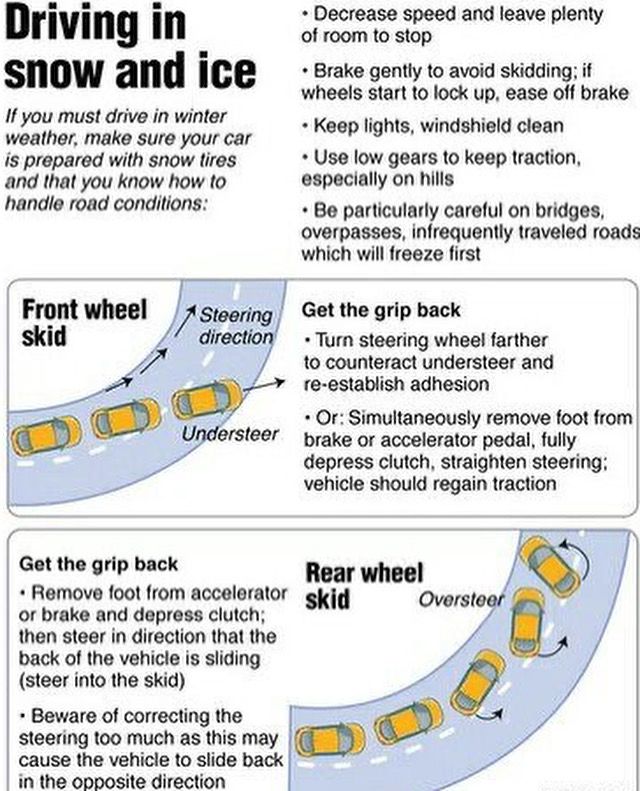 Consider the difference between the city and the suburbs. City streets can be dry, while rural roads are icy. Therefore, a change is necessary if the daytime temperature does not exceed 3°C.
Consider the difference between the city and the suburbs. City streets can be dry, while rural roads are icy. Therefore, a change is necessary if the daytime temperature does not exceed 3°C.
Soft winter tires lose their effectiveness at 10°C and above. The braking distance increases, the probability of accidents increases, the comfort of travel decreases. The optimal period for replacement is from mid-October to November 15-20. The first “call” is snowfall or frost.
As a general rule, the machine must be prepared before snow or ice forms on the road. If a sudden change in temperature is expected, and the car is used intensively, put the Velcro on at 9°C. In such cases, it is necessary to avoid abrupt maneuvers, choose a gentle speed mode, and keep an increased distance.
If the car is used irregularly, the optimum temperature for replacement is 0°C. In order not to get into an accident, you can use public transport and wait for favorable weather conditions.